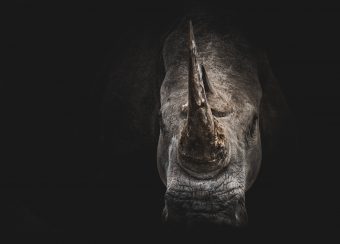Scientists are planning to flood the black market with realistic fake rhino horns made from horse hair in an attempt to reduce illegal poaching.

Rhino horn is in demand for a range of uses, from traditional Chinese medicine to ornamental carvings, and the illegal international trade is thriving. In South Africa alone, 769 rhinos were poached in 2018, and there have also been attempts to steal rhino horns from museums in Europe.
While a number of approaches have been looked at to tackle the trade, from stigmatising the use of rhino horn to legalising domestic trade, experts say there is another option: swamp the market with fakes.
“The economists seem to think that if you flood the market with substitutes, the price will drop,” said Prof Fritz Vollrath, the co-author of the research at the University of Oxford. “If the price drops and the penalty of having rhino horn is still very high, then the value proposition changes for the trader.”
The horns of most animals, including cows, have a bony centre covered by a layer of keratin – the same protein that is found in our hair and fingernails. Rhino horns are solid keratin and do not have a bone core.
Now scientists say they have made a convincing fake rhino horn by gluing together the hair of a horse’s tail, stripped of its outer layer.
The team say they chose horse hair because the animal is a close cousin to the rhinoceros, while the hairs have similar dimensions to the keratin filaments – or hair – that the team say make up rhino horn.
The “glue” used by the team was a silk-based substance they say emulates the materials that fulfil the role in real rhino horn. Cellulose was also included in the artificial mix to resemble the plant material that is incorporated when the animal sharpens its horn.
The resulting material, said Vollrath, can easily be moulded into a rhino horn shape, dried under vacuum in a hot oven and polished. The upshot is a material that shows similar mechanical properties to the real deal, feels similar and even looks similar under a microscope.
“It appears from our investigation that it is rather easy, as well as cheap, to make a bio-inspired horn-like material that mimics the rhino’s extravagantly expensive tuft of nose hair,” the authors write.
The team believe the development could lead to the rhino horn market being swamped with faux horns, thereby sowing confusion and causing a price crash – making it less profitable for poachers to source the real thing.
“[The idea is] any punter who wants to spend 1,000 quid on a couple of grams says, ‘Wait a minute, what is my probability that my stuff is real or that it is just horse hair?’” said Vollrath. “It is just rattling the market.” However, the team say it will be up to others to develop their idea.
The latest study is not the first to look at the possibility of producing fake horns. Among those working on the idea is the start-up Pembient, which is attempting to bioengineer fake horns that are genetically identical to the real thing. The first are reportedly expected to go on sale in 2022.
Dr Richard Thomas from the wildlife organisation Traffic said that while the latest study had good intentions, it posed considerable risks.
“Pushing a synthetic alternative could help to reinforce the perception that rhino horn is a desirable commodity, thus perpetuating existing demand, while presenting consumers with a synthetic alternative may actually stimulate demand for the real thing, thus exacerbating the existing situation,” he said.
Read more: Guardian


